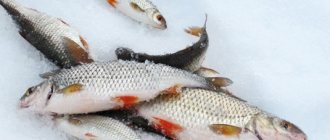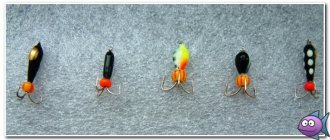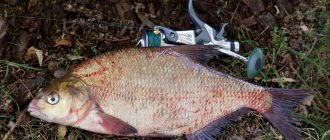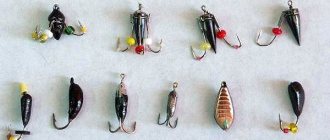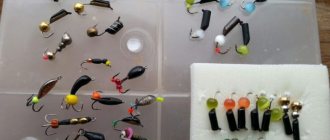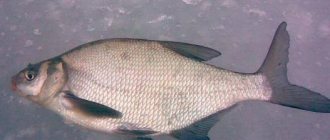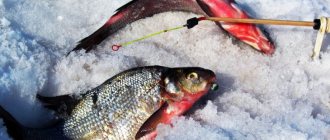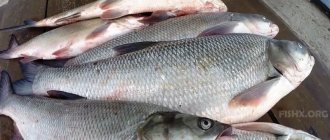Nods for winter fishing
Today, nods for winter fishing have a huge variety of designs and materials. The assortment of fishing stores includes plastic, metal nods, and nods made of composite materials. In addition, there is a conditional classification of nods by purpose: for trolling, nods for balancers, jig nods for reelless and other types of winter fishing.
Winter nods for a winter fishing rod
In some cases, there is no point in making a nod for winter fishing on your own, as this requires time, skills and materials for manufacturing. Now, for 20 rubles, you can buy a ready-made nod for almost any fishing rod. The problem with ready-made nods from the store is that they are of little use for light jigs, and they still need to be modified.
The point of making a nod with your own hands is when you need a special nod for winter fishing - completely suitable for fishing with a specific bait (jigs, spoons or balancers).
Unlike guards or bite alarms, the main function of the nod is to guide winter bait, be it a jig, a balancer or a spinner. With the help of a nod, the angler monitors the bait's contact with the bottom, gives the bait the desired amplitude and frequency of oscillations, and registers the bite.
Video - Jig trolling for perch
The video (link) shows techniques for trolling a less active perch with a jig using a fishing rod equipped with a vertical lure.
That is, when the perch is practically not interested in the classic bait patterns, which it can occasionally knock on, but does not want to sit on a hook or tee hinged to the spoon.
In the jig trolling of a perch, the most active part can be taken not even by the sheer perch lure itself, but by the bait on its hinged hook in the form of a small bead. Or a strip of thin rubber made in the form of a narrow ribbon, cut from a balloon.
To play the bait on a hook or tee, you can go to the jigs shown in the video with vertical perch homemade lures that can shake the most lethargic perch.
You will have to adjust them somewhat to suit the characteristics of your fishing rods. Yes, and such manipulations with perch bait can be called wiring with a big stretch.
Rather, it will be the jig games of a homemade winter perch spoon under the influence of a steel spring, the nod suggested above in the text, which helped me out an infinite number of times during the periods of the worst perch bite. I fully vouch for the technique with my many years of experience and experience.
In one of the articles on the site I mentioned the so-called “Scandinavian” spinners. It’s just the hooks dangling under them on chains that may be suitable for such winter fishing.
Types of nods according to materials of manufacture, design, and their purpose
As we said above, nods (or rather, their working part) are metal and plastic; products made from natural materials are less common. Nods made of different materials are suited to certain types of winter fishing to varying degrees. Now let's look at this in more detail.
Materials for making nods
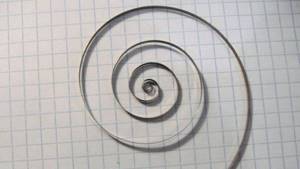
What nods are made of:
- Spring steel metal plates. A typical example is a clock spring or a tape measure. Suitable for trolling rods and heavy jigs. The advantage is indestructibility. Disadvantages: difficulty in processing during manufacturing, sometimes excessive roughness of the gear.
- Plastic plates. Dacron (thermoplastic, also known as: polyethylene glycol terephthalate, PET, PET, PETG, mylar) is suitable for production, which is taken from various plastic products - disposable PET containers, X-ray film, etc. Plastic is great for making any type of nod.
- Twisted spring. Very poorly suited for nods, but suitable for making gatehouses.
- Rubber nipple. Suitable for making simple nods. Now it is almost never used.
- Boar bristles. Suitable for making jig nods. An anachronism, boar bristles are almost never used now.
- Fishing line. Previously, in the absence of the necessary materials, thick fishing line was sometimes used to make nods. Forest nods are now almost never used.
Nod designs
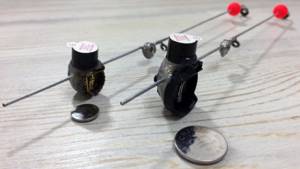
What types of nods are there by design:
- Classical. The working part of the nod (usually a plate) passes through the base, which is the holder of the nod on the winter fishing rod.
- Combined. This is a different kind of modernization of the classic nod, a combination of different materials.
- Complicated structures (most often these are not nods, but gatehouses).
The working part of plate plastic or metal nods can be simple, conical (trapezoidal, “swallow wing”) or double-conical. Double-taper means taper in two planes - not only in the width of the plate, but also in thickness. This is necessary so that the nod does not bend at only one point, but works along its entire length. We will talk about this as the material progresses.
Designs such as: crossbow nod, Shcherbakov balance bearing nod, etc. – all this applies more to guards and bite alarms. We'll talk about this briefly too.
Tackle for bream in winter
To catch bream, both from a boat and from the shore, the same equipment is often used. This limited choice is due to the general design features of all gear. A bite signal is given either by a float or a nod.
The first fishing device is more popular than the second alarm. Their peculiarity lies in the principle of their work - to convince the object of fishing that the proposed bait is a real delicacy, food.
This is precisely the task of setting up the tackle for bream in winter in order to be guaranteed to attract its attention and provoke it to attack.
The nod has a significant bend angle, which provides a sufficient degree of sensitivity and fully normalizes the weight of the jig, and weight does not play a significant role here.
Thanks to this device, the fisherman can clearly and quickly adjust the gear taking into account specific fishing conditions, and also makes it possible to make a timely hook. If you follow these recommendations, you will be 100% successful.
Fishing rods equipped with a float are used both in reservoirs with standing water and with strong currents.
The components of the gear are:
- rod;
- fishing line;
- hook with sinker;
- float.
For information! Fishing for bream in winter is equally effective both with a purchased fishing rod and with one made with your own hands - from hazel.
The main condition is that the tackle should be quickly assembled and disassembled; the fishing line should be reeled in without any problems, which is important when moving from one hole to another. There is a fairly large assortment of jigs on the market for catching bream; a nod most often acts as a bite signal.
Fishing thread with a thickness of 0.15-0.20 mm is the most effective option for ice fishing.
Correct nod
What should be the correct nod? It all depends on personal preference and lure playing style. For the same bait, you can use nods of different rigidity - straight and short or long hanging, and the effectiveness will depend only on the nature of the game. The correct nod is the one with which you can catch fish.
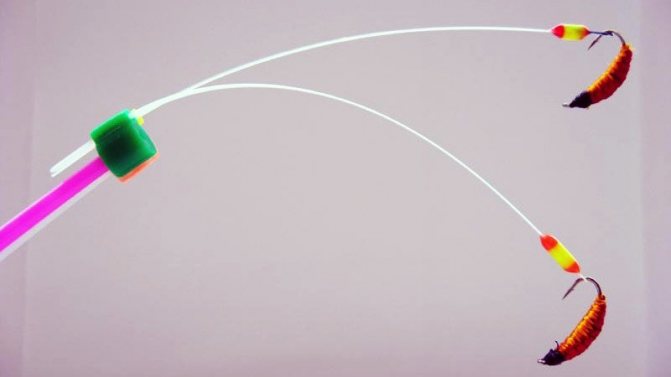
Correct nod stiffness
It is generally accepted that shorter and stiffer nods are suitable for catching predators, while long, strongly hanging ones are suitable for peaceful fish. But this is actually not necessary.
Fishing for bream in winter on a reservoir
When catching bream in reservoirs, a jig or a winter version of a float rod is used.
The float rod equipment consists of the following elements:
- fishing thread with a cross-section of 0.1-0.12 mm;
- small size and bright color float , for loading which a load is used that will lower it 1 cm into the water;
- miniature jig , equipped with a hook with a long shank or a simple small hook.
If a hook is used, a weight should be installed in front of it. In this case, leashes are not required to catch bream.
Jig tackle is quite simple to prepare:
- forests with a diameter of 0.08-0.1 mm, the color of which is chosen to match the color of the water in the reservoir or a colorless version;
- the flexible nod should have a length of 10-15 cm, it should have no memory and have a slight windage;
- tungsten jig
Catching bream in winter with a float
Equipment for catching bream in winter
Depending on the size of the fishing object, equipment for ice fishing is selected. If the potential small-sized prey is a white bream, then the usual version of the gear is suitable, but for hunting a large specimen that lives at considerable depths, a more serious installation will be required.
In addition, standard equipment is recommended to be used when the fish is hungry and active, and when the fish is sensitive - for passive biting.
Standard equipment with one float
The set of elements for this equipment option includes:
- main sinker;
- shepherd boy;
- hook;
- float.
The use of a jig is allowed here. For winter fishing to be successful, it is necessary to very clearly configure the gear, where the selection of the buoyancy of the float, the weight of the sinkers with a hook and bait, or a jig must be carried out correctly.
The combination of two sinkers and a hook is highly sensitive, where the weight of the equipment itself should be less than the carrying capacity of the float. The main thing is that the float is on the surface. You can check this point by clicking on it.
If, after immersion in water, it does not return to its original position very quickly, then everything is done correctly.
Using a buoy in the rig prevents the float from pulling out the entire load; it sinks. The catching tackle must be clearly adjusted. Because there are situations when the float or nod jumps out sharply at first, and no action is taken during hooking.
Such a development of events becomes possible when the object of the fishing, feeling the weight of the jig (supporting bait), tries to immediately free itself from the foreign substance.
Thanks to fine tuning, it is possible to prevent such consequences: when a fish swallows the bait, the float begins to slowly float up and take the weight on itself, without scaring it at all. It is important to make the hook in a timely manner before the float is completely on the surface of the water surface.
The float should be deepened not by 1.5-2 cm, but by 5-7 cm, which will increase the operating range of the float, and the bream will have a reserve of time to perform the hooking. You can save time on setting up gear by adjusting it at home.
Equipment for deep waters with two floats
In promising areas of the reservoir, where the depth is at least 8 m, it is effective to use a special set of components for a winter fishing rod for bream.
It is not rational to use a lightweight version of the equipment in such conditions, the dive will be slow, straightening will not occur fully, the bait will move under the influence of currents in the water column or the line will begin to bend in an arc, reducing the degree of sensitivity of the equipment.
To avoid such a problem during fishing, fishermen equip the tackle with a heavy main sinker. Accordingly, the float used is quite large, but it can be easily noticed by fish.
For such cases, during installation, an additional small bite alarm is provided, which is placed on top, 5 cm from the surface. The large float is deepened to 1 m.
Setting up the gear is carried out according to a similar principle. At the moment the sub-shepherd is raised, the working tackle begins to appear on the surface, but only a small bite alarm will emerge first, the weight of which does not affect the weight of the nozzle that ends up in the mouth of the prey.
The weight of the bait is held by a large float. Composite winter floats for bream work the same way. It is more effective to use the described installation of gear in calm areas of a reservoir with great depth.
Fishing for bream in winter on the devil
Of the variety of baits, the devil, equipped with hooks and sinkers, is especially popular. Its weight should be from 1 g, color black, brown or green, effectively equip it with beads of different colors.
For catching bream, options in the shape of a drop or a roller are suitable, the length of which is 10-20 mm and the diameter is 5 mm. Hooks should be selected in large sizes.
The principle of catching devils:
- The bait is lowered to the bottom and knocked several times to create turbidity.
- Pause for 5 seconds and again raise it by 30 cm, shaking it slightly.
- The bait should be cast without stopping.
- Having raised the fishing rod and made a three-second pause, perform a confident hook.
- If there are no bites, then you need to move on to the next hole.
- Compliance with ice safety rules is mandatory.
Catching bream with a reelless bait
The tackle consists of:
- fishing rod 40-45 cm long;
- medium-hard nod;
- coils;
- scaffolding with a cross section of 0.1-0.2 mm;
- reelless jig.
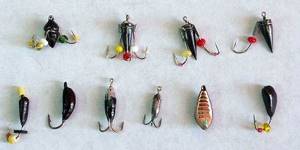
Fishing is done from top to bottom - vertically. The jig moves smoothly, creating the illusion of a drowning insect. If you make sudden movements, the fish will become wary and leave. If there are no bites, the jig is led to the bottom.
Most often, the bite occurs the moment it touches the bottom. It’s good to tap on the bottom to draw the fish’s attention to it. The best option is 120 vibrations per minute. Beads on a jig work great.
Catching bream on a garland in winter
This tackle, unpretentious in terms of assembly, is presented on the market in various versions, but the most popular option is considered to be a simple winter fishing rod equipped with a reel and line with a cross-section of 0.18 mm.
Installation of small jigs is carried out at different distances from each other, but not less than 30 cm. It is recommended to additionally load the garland only on reservoirs with strong currents. The deflection angle of the guard is 20 degrees, which allows you to maintain the level of sensitivity of the gear.
Having decided on the fishing location, you need to drill holes 5-10 m from each other. After feeding, they begin to be caught one by one.
